I’ve been watching Springfield Armory from afar for quite some time and have seen the company continue to grow. I’m not referring to simply revenue and spreadsheets, but instead growth in product breadth and capabilities. In my opinion, they’ve been doing it right for many years now. No fluff or smoke here — Springfield continues to raise the bar.
The SAINT line of ARs first launched about a decade ago, and it caught many by surprise. Yes, this was an admittedly saturated market, and the company was more known for its traditional M1A-style rifles. So, how do you make your mark when jumping into manufacturing such a widely produced platform? Easy. You push your engineering and design teams. You make sure they push the envelope to give users the best possible product. The SAINT line would expand over the years, including the launch of the SAINT Victor series in 2019.
Sum of Its Parts
That familiar phrase, “The whole is greater than the sum of its parts,” comes to mind while looking over this newest iteration of the SAINT Victor.
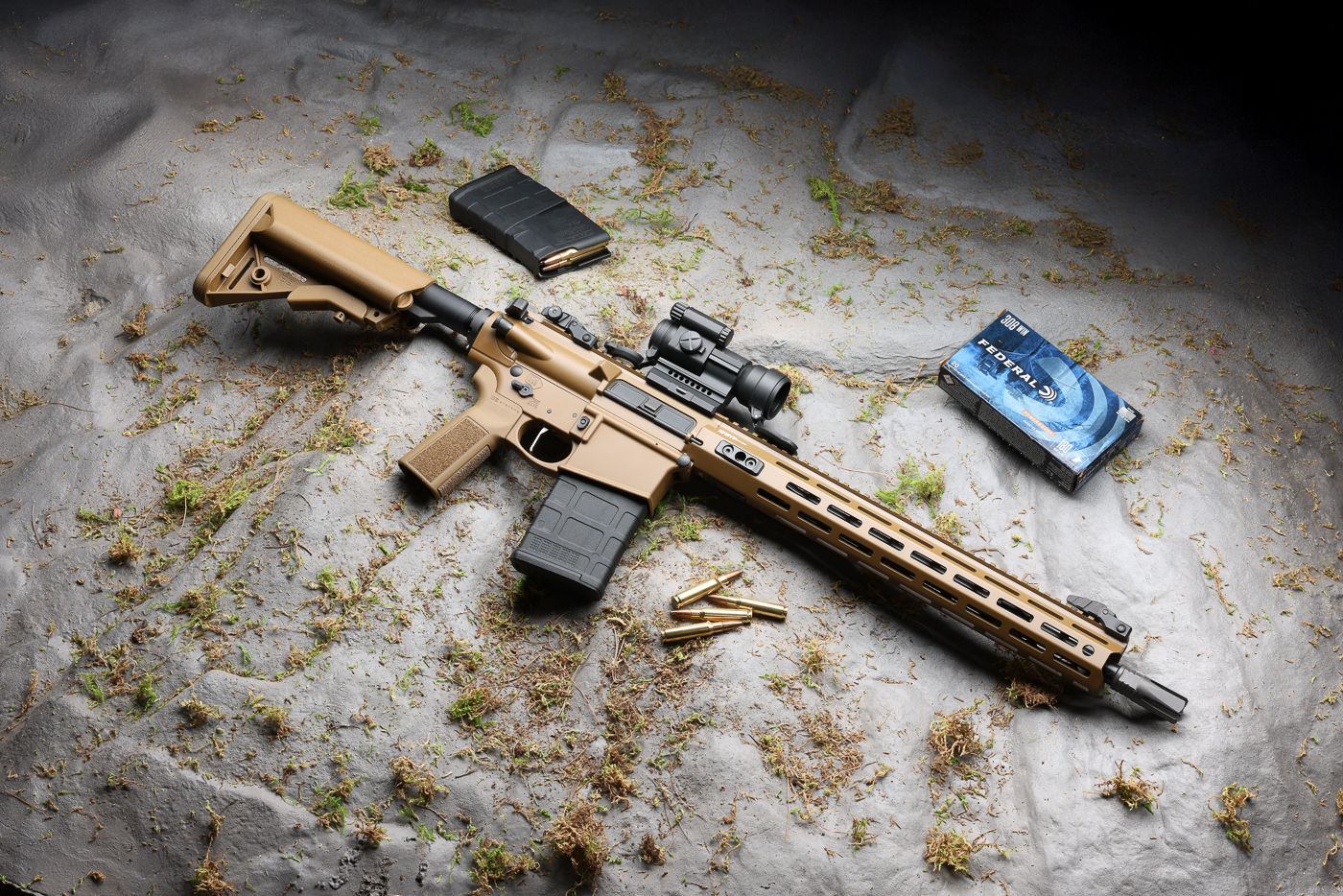
Built on a foundation designed to provide users with a platform capable of professional-grade capabilities, the SAINT Victor quickly made a name for itself by offering premium features and impressive performance. However, Springfield Armory decided it was time to give the design a close look. The result is the “new for 2025” series of offerings of SAINT Victors we are considering here today.
I also want to point out that we are not looking at a major redesign here. With the solid foundation of the originals, this revamp focused more on a “sum of its parts” approach. Rather than any particular new feature outshining all the others, there is instead a consistent progression in individual components that are designed, added or enhanced.

First, let’s lay out what new models there are on offer. Chambered in 5.56x45mm NATO or 7.62mm NATO, there are 16 total new SAINT Victor models. These include 16” models as well as an 11.5” barreled pistol (and an SBR) in 5.56 NATO, as well as a really interesting new 14” pinned and welded version. In 7.62 NATO, there are both 16” and 20” models.
Mid-length gas systems are featured on the 14” and 16” 5.56mm guns, while the pistol and SBR have carbine-length systems. The 16” 7.62mm has an intermediate-length system between mid- and rifle-length, and the 20” 7.62x51mm has a rifle-length gas system. Add in lo-cap, California-compliant, and color variants (Cerakote Coyote Brown and Tungsten Gray), and you have a lot of choices here. MSRPs range from $1,249 up to $1,689.
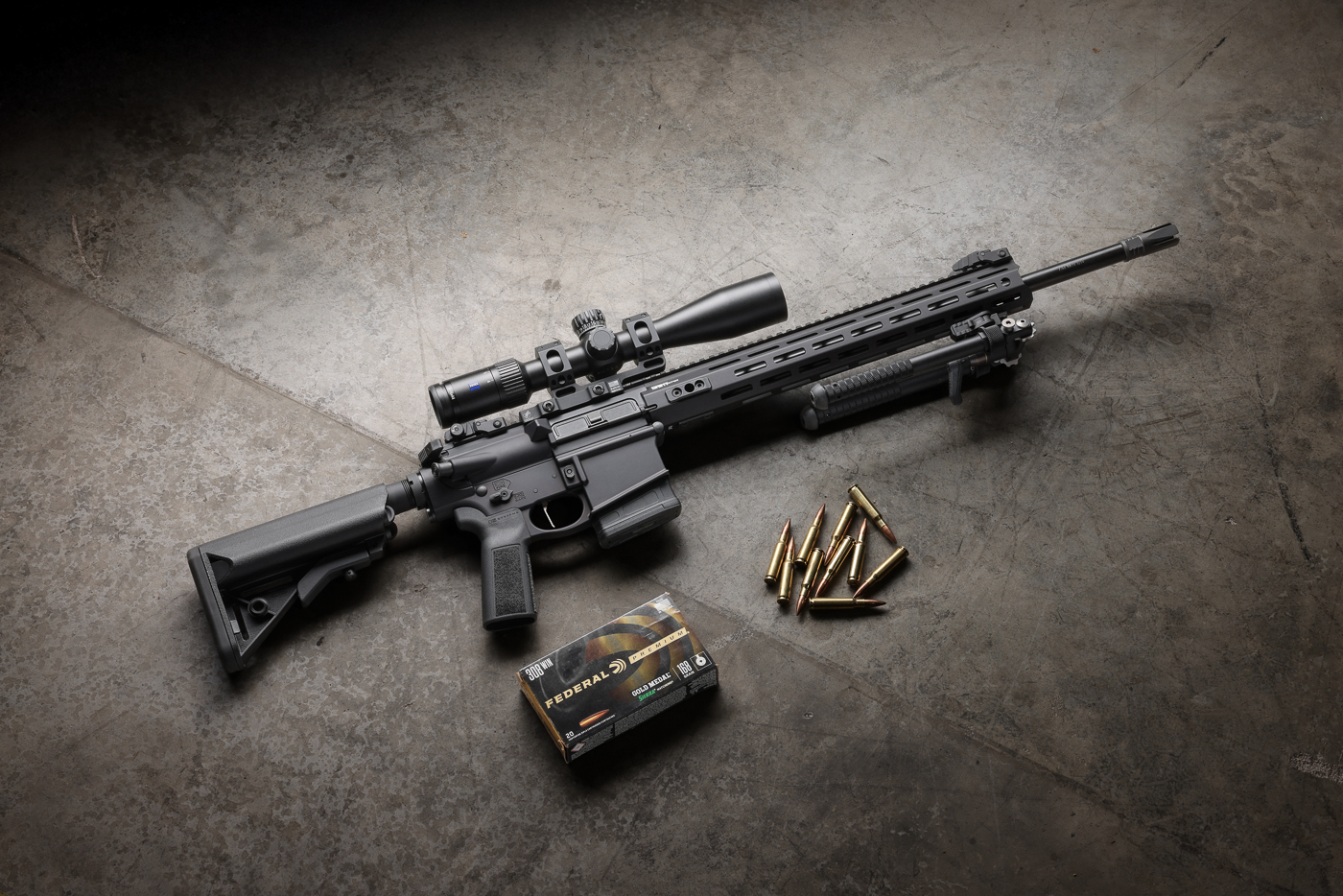
Looking them over, you get an immediate sense of what Springfield is trying to accomplish. Manufacture a competent, capable AR platform with top-tier components at an affordable price. If their goal was to create an AR that is affordable and reliable, and with enough features to satisfy even the pickiest buyer, I think they’ve done that.
The Details
Let’s dive into what exactly sets these new Victors apart from their predecessors. While the new Victors feature forged 7075-T6 aluminum upper and lower receivers just like the originals, they now feature “government-style” low-profile markings that are simple and attractive. I personally noted the attractive markings for the fire controls. As a visual artist, my eyes are immediately drawn to certain details — even the most subtle ones — and these pictograms add that little touch.
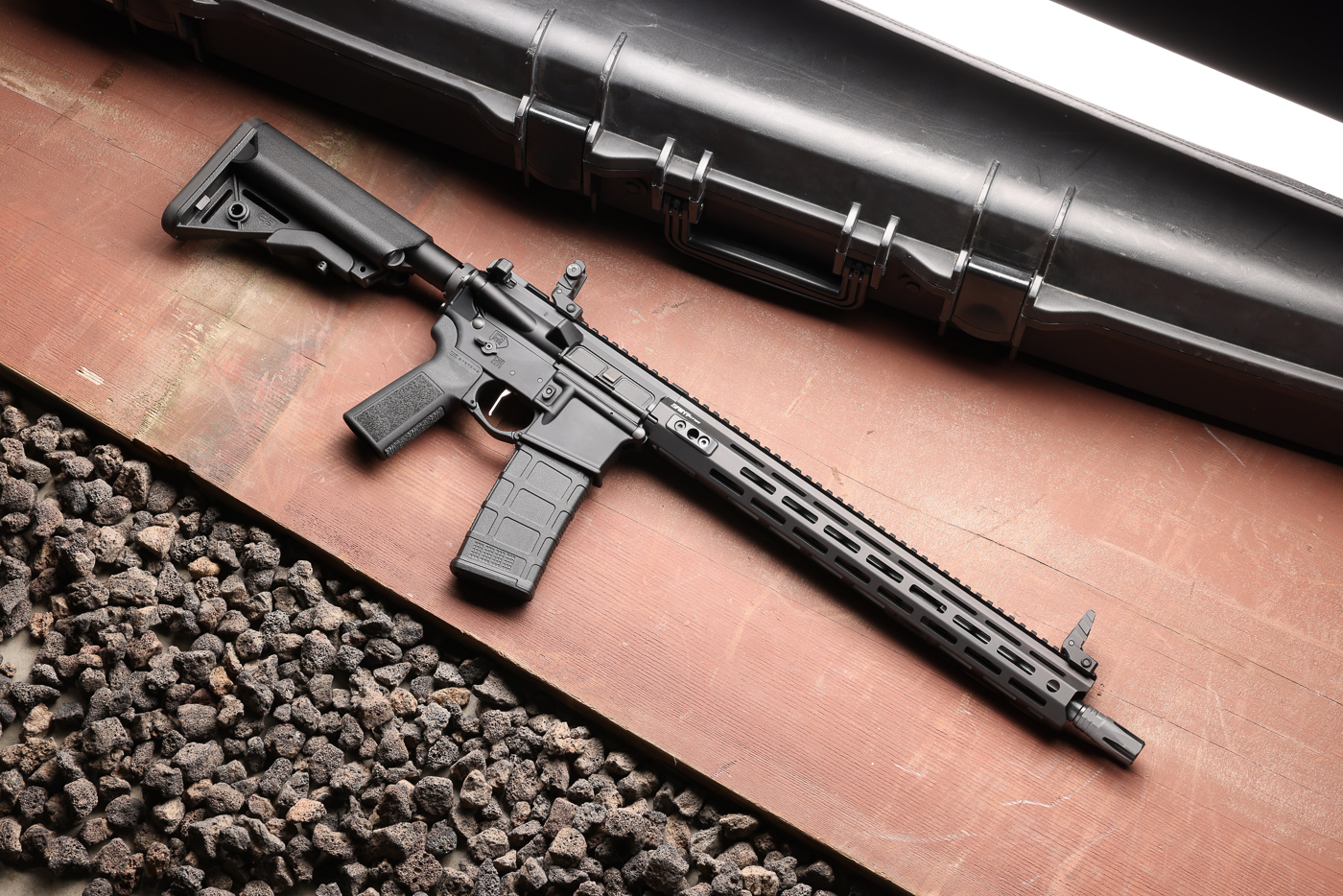
Below the safe/fire engravings is an ambidextrous safety selector — an absolute must for any serious AR. The ability to effectively run the rifle with either hand is paramount. My right-handed/left-eye dominance has made this of paramount importance over my shooting career. While the earlier Victors also had ambis, this new one is a 45-degree model with a short-throw lever on the right side. In the upper receiver, there is a Radian Raptor LT charging handle, designed to offer users full ambidextrous usage there as well. A 7075 T6 buffer tube rounds out the package.
Out front, the Victors feature 4150 CMV barrels with a continuous tapered profile. This design offers optimal heat distribution and maximum rigidity. The barrels feature a durable nitride finish for wear- and corrosion-resistance, and a taper-pinned/low-profile gas block completes the feature set. Topping off the muzzles of all the Victors (apart from the Cali-legal versions) is an eye-catching four prong flash hider. Rate of twist on the 5.56 guns is 1:7”, and the 7.62s are 1:10.
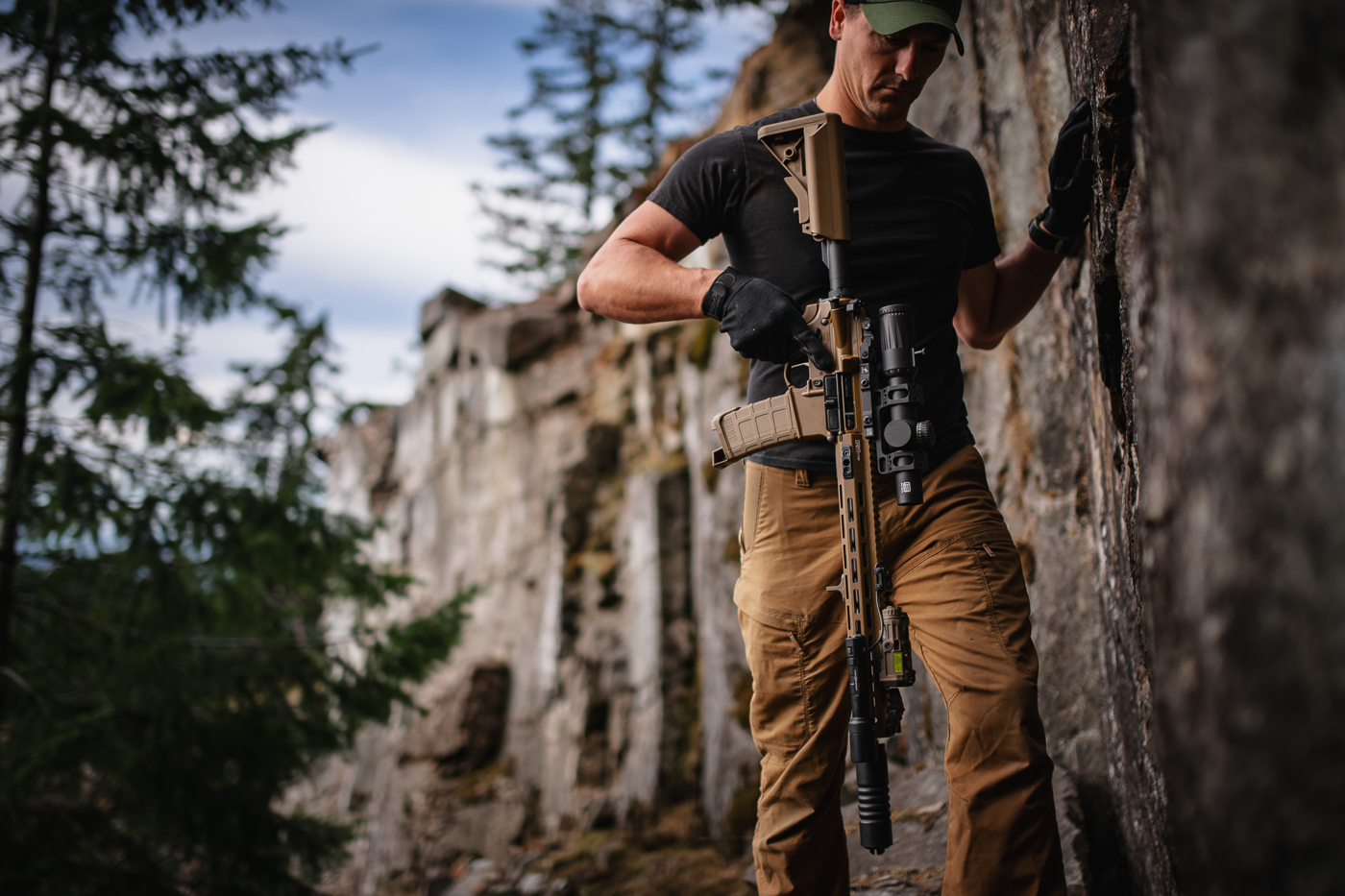
Speaking of barrels, in addition to the 11.5” barrels for the pistol and SBR, and the 16” and 20” options for rifles, there’s a unique one situated in the middle — the 14” pinned and welded model. This 5.56mm employs a 14” barrel with a pinned and welded flash hider long enough to bring total length up to the legal 16” requirement.
Surrounding those barrels is a new free-float rail. This aluminum handguard features a full-length top Picatinny rail with T-slot markings as well as ample M-Lok rail coverage. The handguard is attached to the Victors’ upper receivers by a robust, patented mounting system with integrated QD cups. Atop the rifle is a newly designed set of low-profile manual sights that sit much lower than the original units.
However, much of what made the originals so appealing still remains. The mag release and bolt catch mechanism are standard fare, single-sided and right where you expect them. The lowers of all models except the Cali-legal and pistol versions are fitted out exclusively with B5 Systems stocks, pistol grips and triggerguards. The pistol instead has an SB Tactical SBA3 brace, and the Cali guns have a Strike Industries California-compliant pistol grip and a Magpul fixed stock.
I’m a big fan of the B5 Systems Type 23 P-Grip, which is nearly vertical with a 13-degree grip angle that makes intuitive sense to the hand. It also has a beavertail and well-executed grip texturing to keep retention levels high without shredding you to pieces. The collapsible B5 Systems Enhanced SOPMOD stock is also quite good.
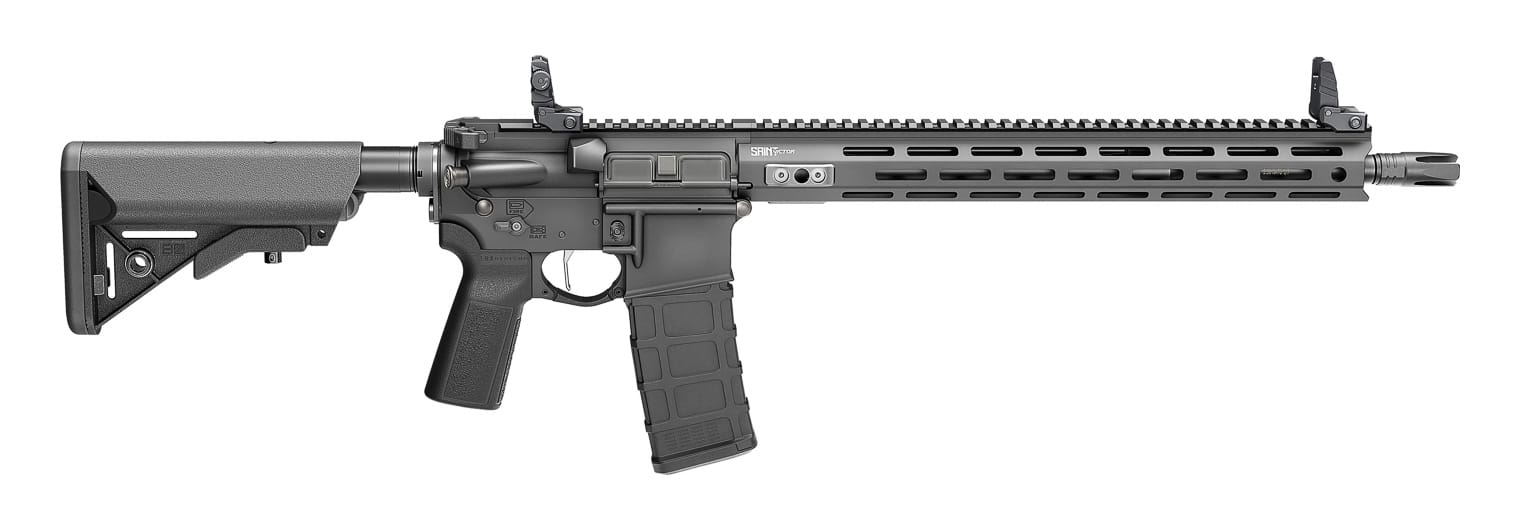
The Victors feature a trigger coated in nickel boron, employing a straight and flat blade that affords the operator great contact and feel. It’s called a “G.I.” trigger, which basically means it’s a duty type, as opposed to a lighter, race gun-type trigger.
Hands-On
I personally got the chance to try out two of the new 5.56mm Victors for this review — a 14” pinned and welded carbine and an 11.5” pistol. So, I set about inspecting them and getting them ready for the range.
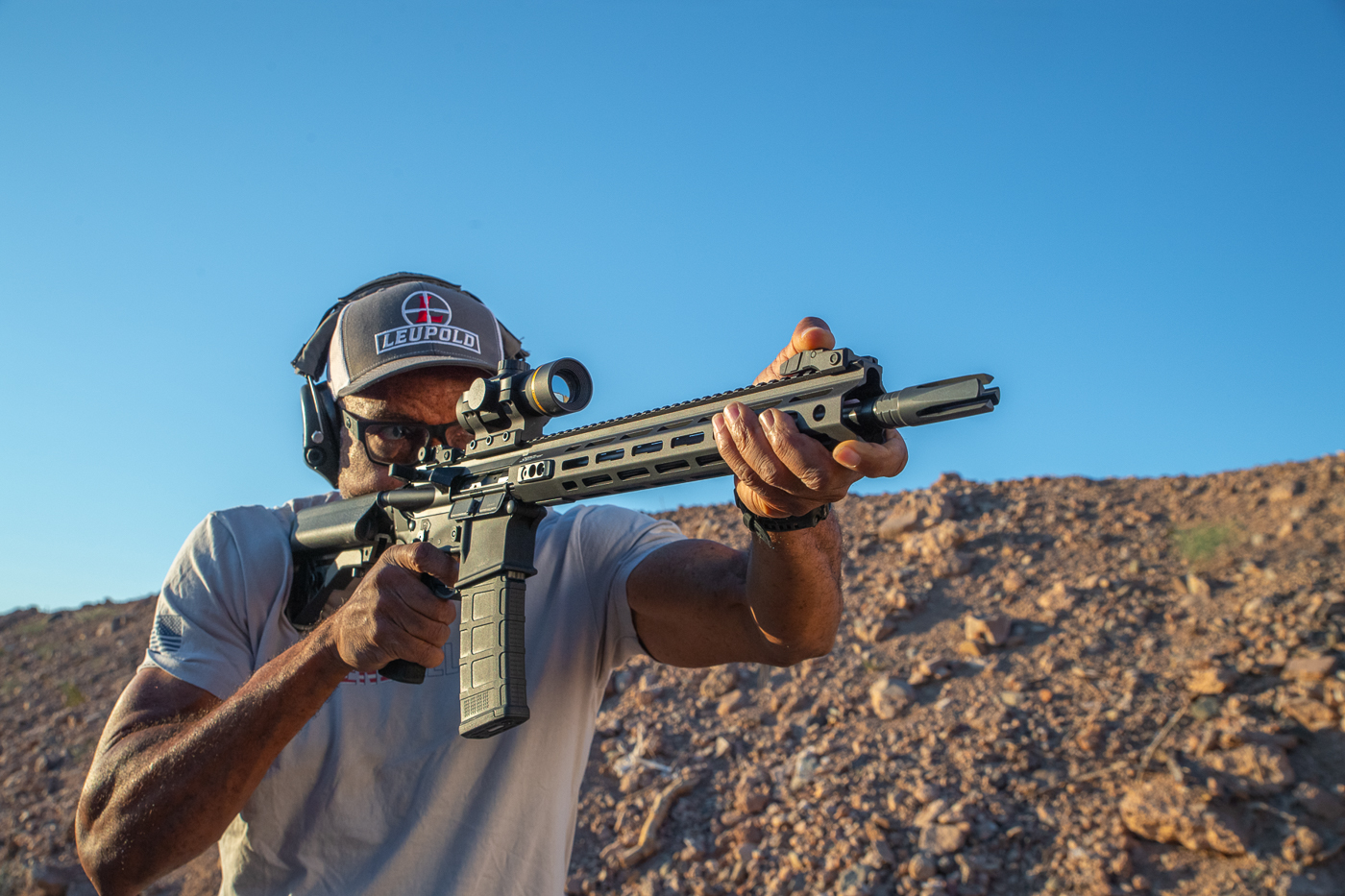
Trigger weight was tested at 4.5 lbs. to 5 lbs. on my test guns, with a predictable breaking point. They exhibited a bit of creep when pressed extremely slowly, but under normal presses none of this was noticeable. All in all, it works well and will hold up in harsh conditions. This is the type of trigger you want for hard use.
The upper gets a couple of bonus points in my book for the inclusion of the ambidextrous charging handle as well as the set of back-up/flip-up sights. I can’t tell you how much it pains me that people think iron sights are unnecessary or useless. The rear sight is windage adjustable, and they are made of aluminum — not plastic. Well done.
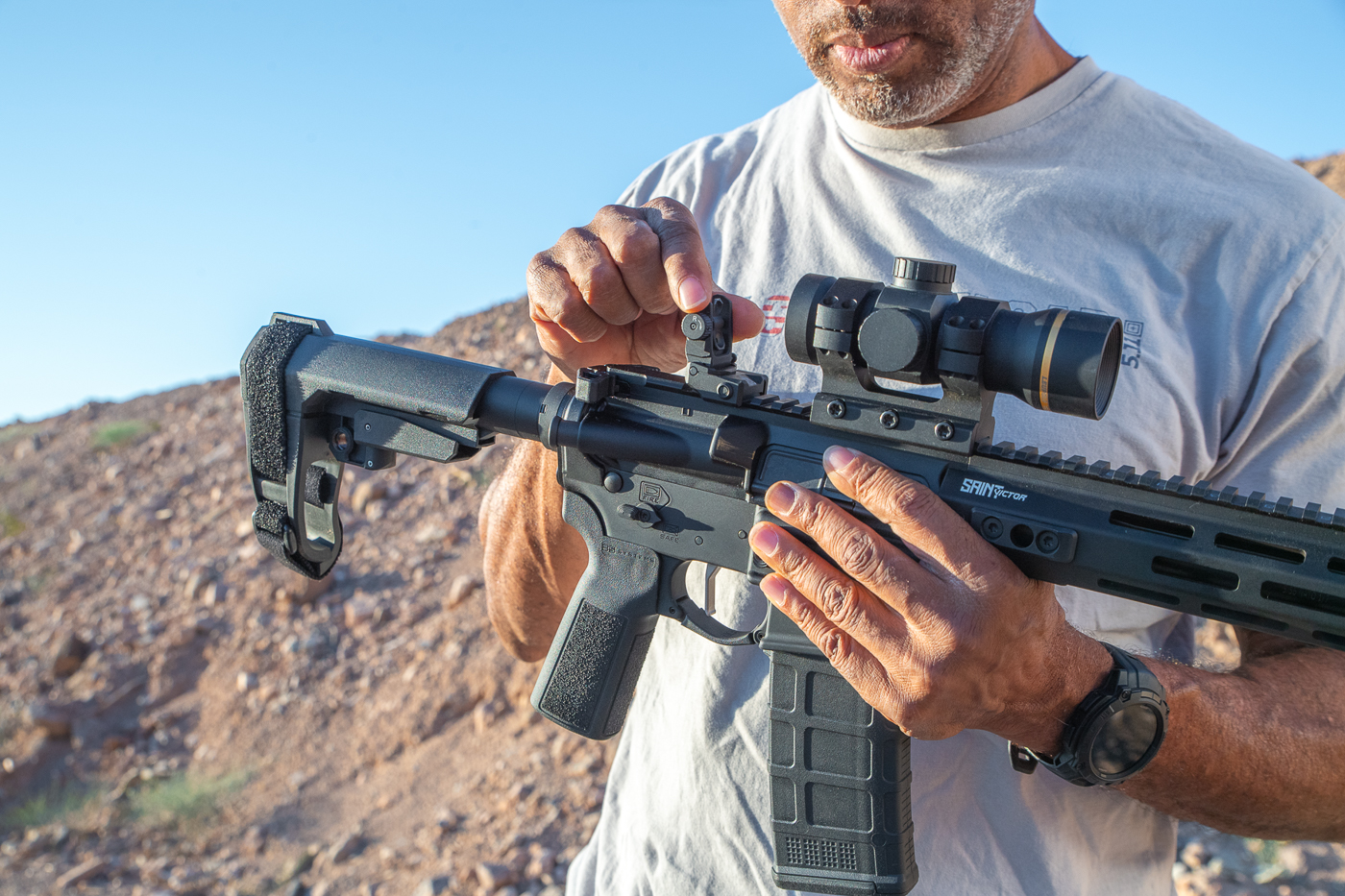
The Victor’s enhanced bolt carrier group (BCG) features an M16-pattern carrier, with a bolt crafted from 9310 carpenter steel. It is HP/MPI tested and nitride finished, and a hard-chromed firing pin extends service life by reducing wear. The gas key and castle nuts are properly staked.
Per the usual, I like to start out on the flat range to get rounds through the barrel before doing any accuracy testing. I have no set protocol other than getting as many rounds downrange as possible.
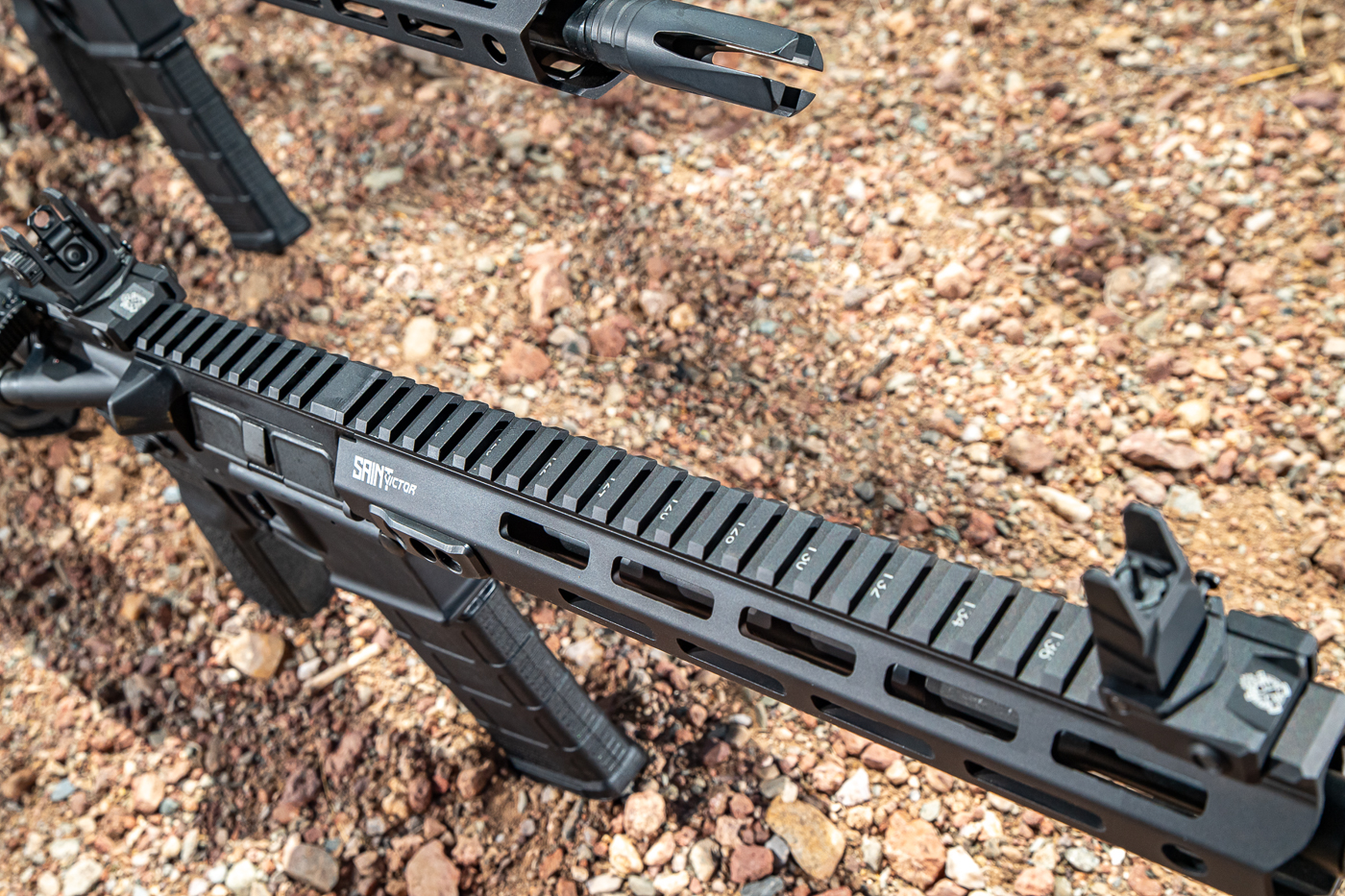
At this point, I pay particular attention to the firearm’s mannerisms — pointability, recoil, trigger feel, and the gun’s ability to invoke confidence in the operator. This is a very real measurement. If the gun doesn’t feel right, you likely won’t shoot right. I don’t make the rules, I just live by them.
Range Results — SAINT Victor 14” Pinned and Welded
Range Results — SAINT Victor 11.5″ Pistol
Follow-up shots were easy on both guns. No malfunctions were encountered, save for one short stroke on the pistol. I chalked it up to the box of random 5.56 NATO/.223 Remington ammo I grabbed on my way out the door. I have no idea what brands were mixed together. Once I transitioned to like-brands and lots of ammo, no other issues were encountered.
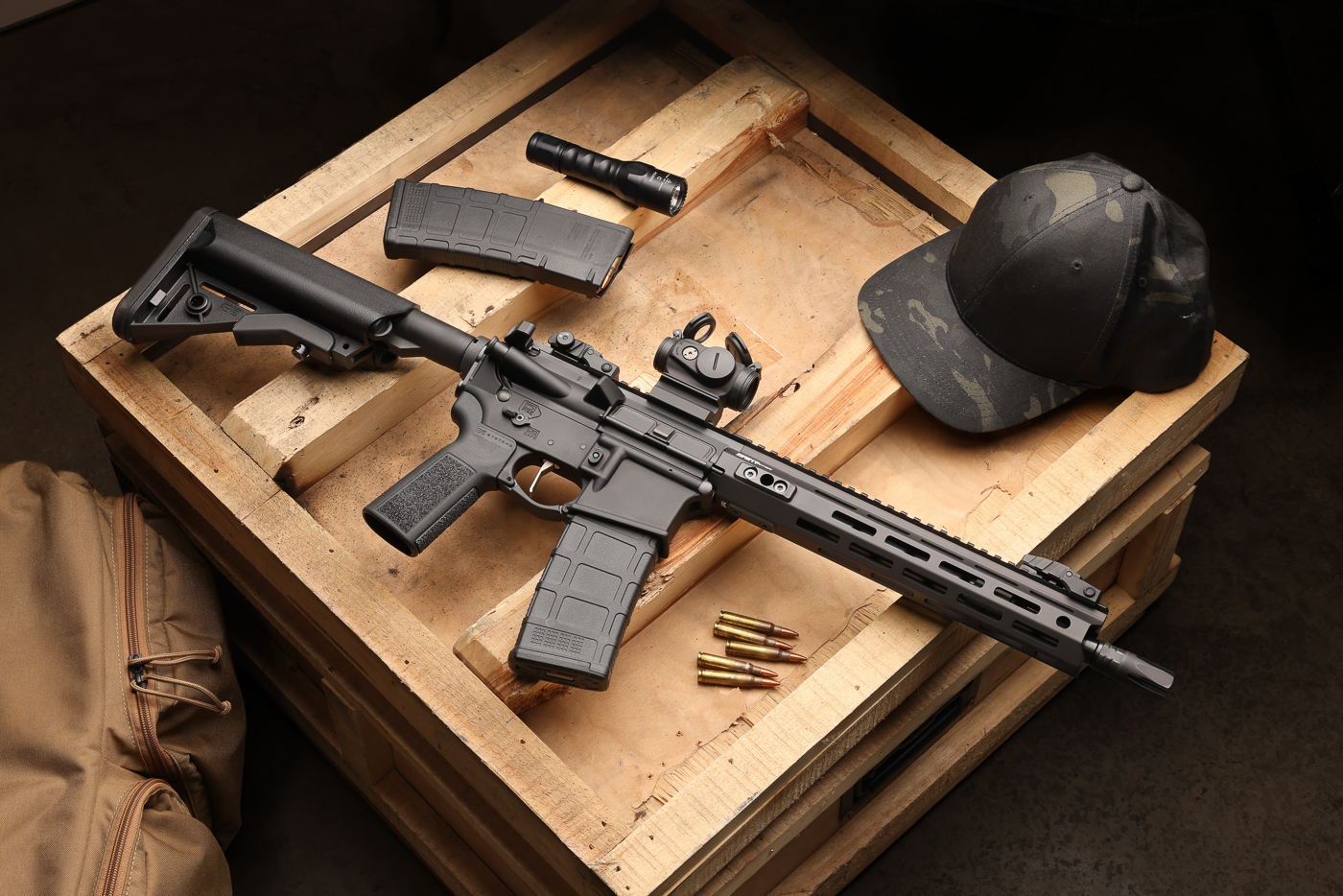
For accuracy testing, I shot both guns at 100 yards. I was able to nab a few sub-MOA groups on this outing. The carbine managed a best 0.85” group, as well as a tight 0.91”. The SBR Enhanced ammo from Fiocchi lived up to its name by delivering the best groups in the pistol. The best group was .87”, but more impressively it averaged .97” across four separate groups. I shot three, five-shot groups with each ammo, but I shot an extra with the Fiocchi because it was shooting so consistently well. I’m not sure what’s in the Fiocchi, but hats off to them for this load.
Conclusion
AR’s are a plentiful option in our wonderful American 2A marketplace. Finding one is not hard, but finding a good one can be. Corners can be cut, and many issues aren’t discovered until round-counts rack up and the make-up has worn off.
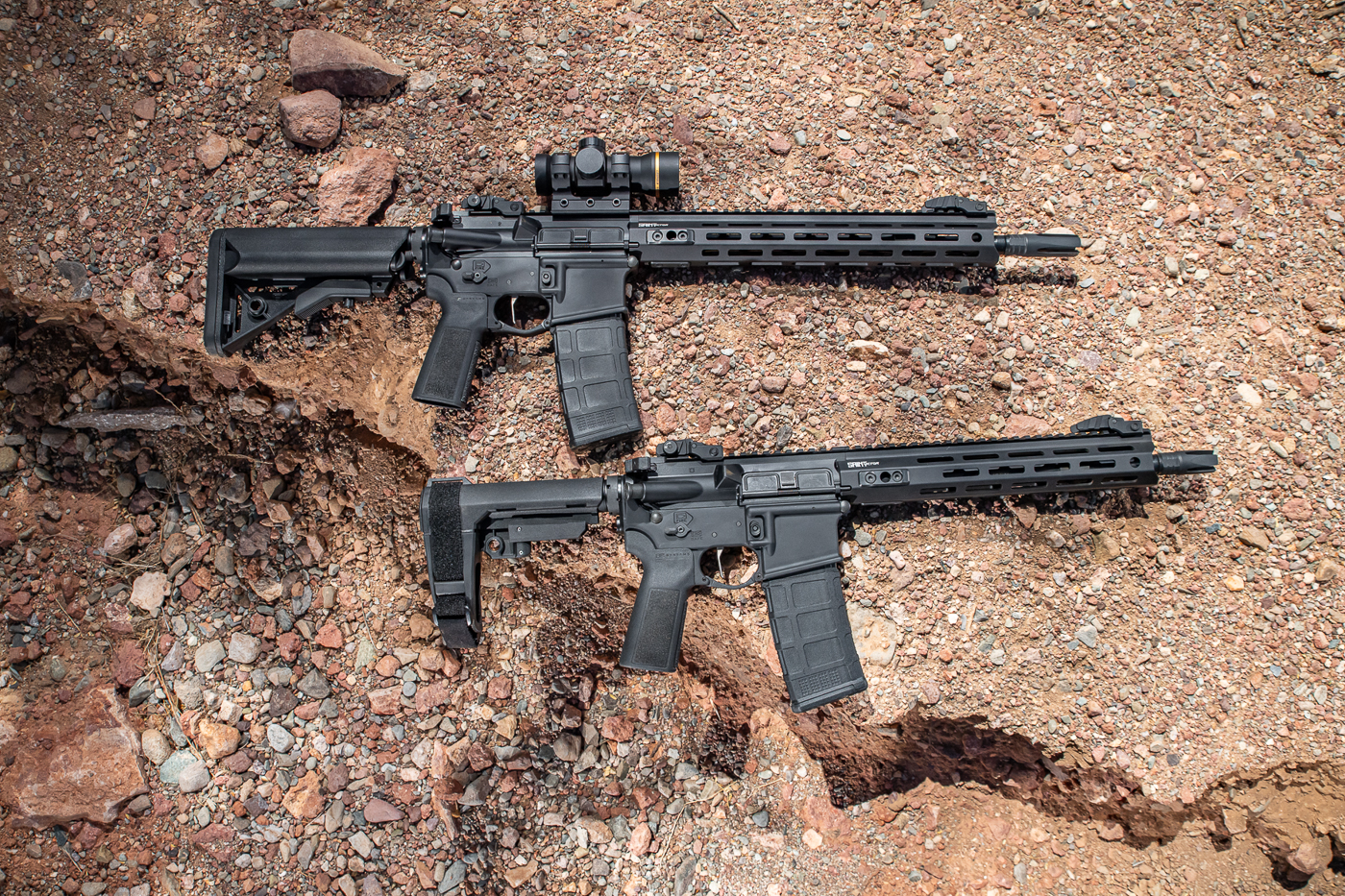
While I’m still in the early stages with these guns, I can honestly say that how they’re configured and what I’ve experienced with them here in-hand leads me to believe that all the right components are blended together in the right way. The result is not only attractive, but appropriate in design and composition.
So, be sure to check out these new Victors. With so many choices, there should be one there perfect for your needs!
Editor’s Note: Please be sure to check out The Armory Life Forum, where you can comment about our daily articles, as well as just talk guns and gear. Click the “Go To Forum Thread” link below to jump in and discuss this article and much more!
Join the Discussion
Featured in this article
Read the full article here














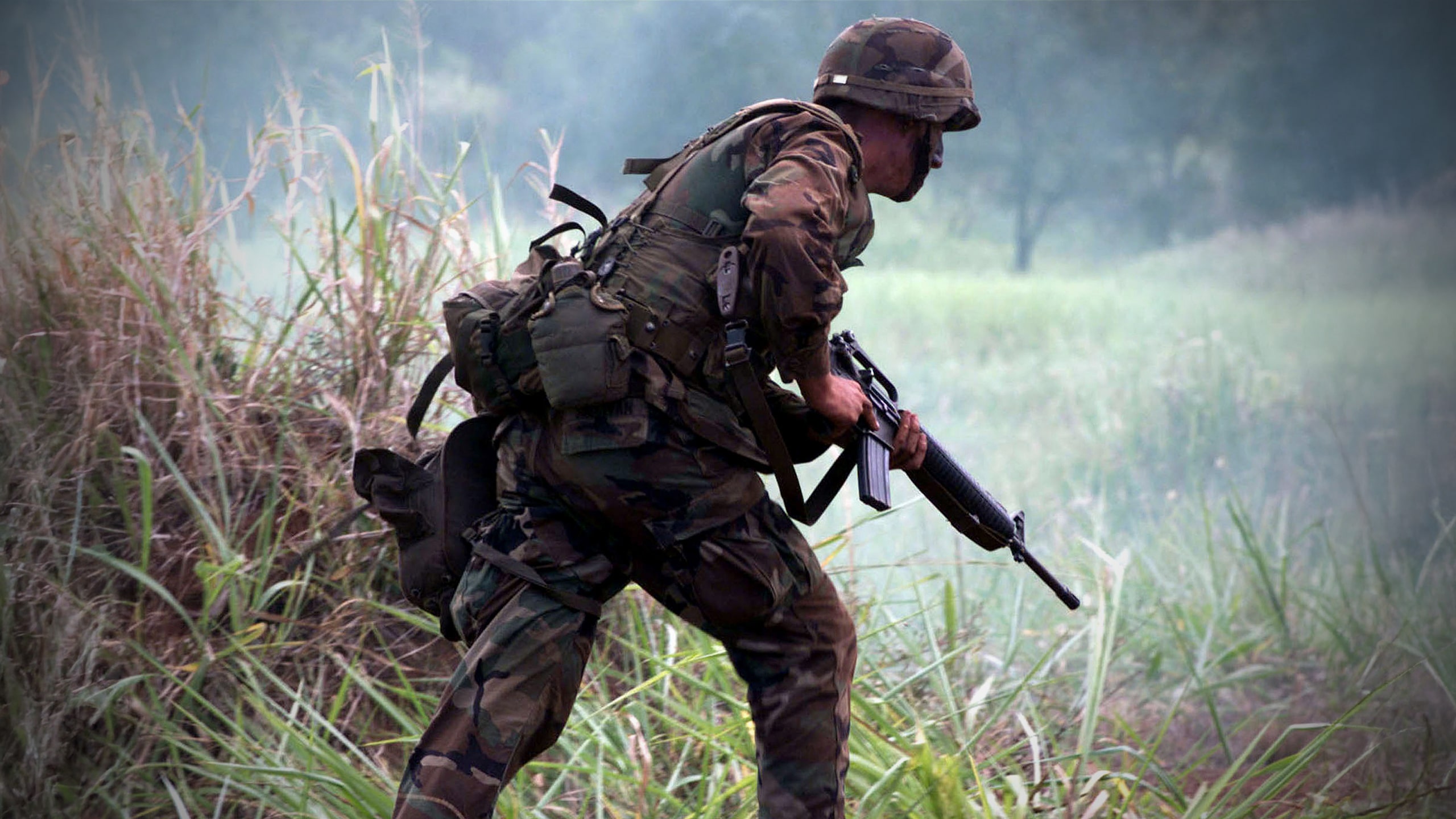



Leave a Reply